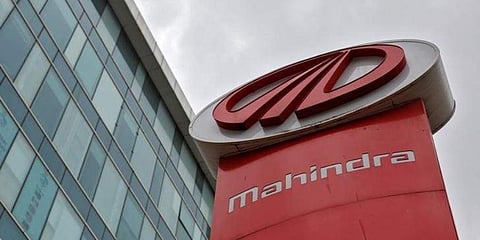

Mahindra and Mahindra has seen a fall in demand for its sports utility vehicles in April-June this year, particularly for its entry-level XUV models.
According to a presentation by the company in front of investors in Boston on Monday, monthly bookings have fallen by 9,000 to 48,000, from 57,000 vehicles per month for the February-April period.
The reduction in demand was largely seen in the subcompact SUV segment, led by XUV300 and XUV400 models. Even the star performer for the company – Thar – saw a fall in bookings.
Of the total reduction of 9,000 units per month, XUV300 and XUV400 together accounted for a fall of around 4,000 units, while the Thar contributed to a decline of another 4,000 units per month.
The remaining decline of 1,000 units came in the form of lower bookings for the company’s basic utility vehicle, Bolero.
On the other hand, demand for the company’s Scorpio-N and XUV700 remained robust with no changes in its monthly bookings.
The monthly demand for Scorpio stood at 14,000 and XUV700 remained at 9,000 showing no signs of distress or slump compared to Feb-Apr.
In case of XUV300 and XUV400, monthly bookings went down to 6,000 in Q1 FY2024 from 10,000 in Feb-April 2023.
Off-road SUV Thar saw monthly bookings fall to 10,000 from 14,000 in Feb-April 2023, while bookings of Bolero fell to 9,000 per month from 10,000.
Partly because of this, the company’s overall pending bookings fell to 2.8 lakhs as of Aug 1 from 2.9 lakhs on May 1.
Despite this, the average waiting period for XUV 700, Scorpio N, XUV 300 can be anywhere near eight months to one year while Thar's waiting period is more than a year.
SUPPLY CHAIN DISRUPTION
The company was one of the several to be impacted by disruptions in the semiconductor supply chain. Since 2020, there has been a global semiconductor chip shortage due to the Covid-19 pandemic.
The chips are used to drive various vehicle functions ranging from infotainment to more critical functions like engine management. This shortage led to production halts and reduced manufacturing capacities for many automakers.
However, thanks to improved semiconductor supply and factory augmentations, the company had managed to raise its production capacity from 29,000 in March 2022 to 39,000 by March this year.
Unfortunately, it was again hit by some shortages during the April-June period, dragging the average wholesales during the period back to 33,000 units per month.
"A volume impact of 5,000 SUVs and 2,000 Pik-Ups in Q1FY2024 was due to a short-term disruption in engine-related parts at the supplier end and supply constraints in semiconductor," the company said in its presentation.
However, the supply situation has since improved, the company said, pointing out that it sold 37,500 units in July 2023.
The company, on a positive note, also stated that it is back on track to achieve its Q4FY2024 exit capacity estimates at 49,000.